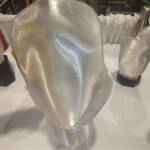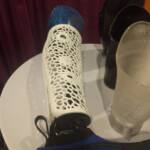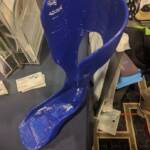Revolutionizing Healthcare:
How 3D Printing is Transforming Prosthetics and Assistive Devices
The medical device industry has long been a field where innovation thrives, and 3D printing is leading the charge in making healthcare more accessible and personalized. Among its most impactful applications are in prosthetics and assistive devices, where this groundbreaking technology is changing lives every day.
Accessibility Redefined
One of the most significant barriers in the field of prosthetics and assistive devices has historically been cost. Traditional manufacturing processes are expensive, often requiring specialized molds, tools, and highly skilled labor. For patients who need custom solutions, the costs can be prohibitive.
3D printing has changed the game by democratizing production. Using additive manufacturing techniques, devices can be created with precision at a fraction of the cost. This affordability makes life-changing technologies accessible to underserved communities and developing countries, opening up new possibilities for global health equity.
Faster Development and Customization
Time is often critical when it comes to medical devices. Whether a child has outgrown a prosthetic or a patient requires immediate mobility assistance, traditional methods often result in long lead times.
3D printing allows for rapid prototyping and production. Designers can create and refine a prosthetic limb or assistive device in days rather than months. Scanning technology enables precise measurements of a patient’s unique anatomy, ensuring a perfect fit. Once the design is finalized, production can begin immediately, minimizing wait times and delivering solutions to patients when they need them most.
Enhanced Patient and Caregiver Experience
Customization is key in making prosthetics and assistive devices not only functional but also comfortable and empowering. With 3D printing, devices can be tailored to match the patient’s preferences, from materials and weight to aesthetics. This personalization can improve adoption rates and overall satisfaction with the device.
For caregivers, 3D printing offers the ability to quickly iterate and adjust designs to meet evolving needs. For example, a wheelchair component can be reprinted to suit changing mobility requirements, or a prosthetic can be adapted as a patient recovers from surgery. These quick adjustments can significantly enhance quality of life and reduce the emotional and logistical strain on caregivers.
The Future of 3D Printing in Healthcare
As materials science advances, the potential for 3D printing in the medical device industry will only grow. Biocompatible materials, embedded sensors, and the ability to print with multiple materials simultaneously are already on the horizon. These innovations could lead to even more functional, durable, and integrated solutions for patients.
3D printing is not just a technological revolution—it’s a human one. By making prosthetics and assistive devices more accessible, quicker to develop, and more customizable, 3D printing is reshaping the healthcare landscape and improving lives for patients and caregivers alike.




